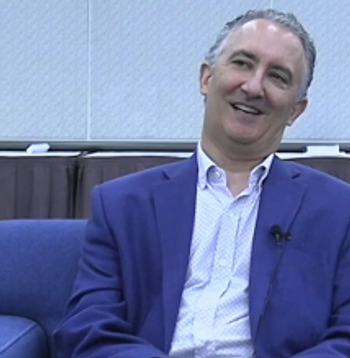
DSM-5 in the digital age – Part 2
In an earlier posting, I considered the merits and flaws of the DSM-5 online website. For this posting, I consider the significance and implications of a cyber-DSM.
In an earlier posting, I considered the merits and flaws of the DSM-5 online website. For this posting, I consider the significance and implications of a cyber-DSM.
The second radical aspect of the post-Internet DSM is the intention to go to an online version of the manual that would be subject to continuous revision and updating. I guess this is what Regier et al1 meant when they wrote “As a result, we expect that DSM-V will be a living document with a permanent revision infrastructure to enable revisions of specific diagnostic areas in which new evidence is replicated and reviewed as ready for adoption.”
This is exciting from a purely science/research perspective. DSM categories could be continuously updated as empirical studies generate new understandings. Empirically-efficient diagnostic criteria along with validated laboratory and endophenotype measures could be added to diagnostic criteria, presumably diminishing the false-negative and false-positive problems.
This intent, while laudatory in some ways, poses thorny problems about the many roles and uses of the DSM in our society. One of my primary critiques of the DSM-IV process was to lament, as I put it, the DSM-IV’s “all-things-to-all-people”quality.2 The DSM is an administrative document for tracking service use. It’s a nosology of disease. It’s a coded system for billing. It is used (however lamentably) as a textbook of psychopathology for students and residents. It provides diagnostic schemes for short- and long-term clinical trials. It provides the nomenclature for public, civic, and legal discourse about mental illness. A continuously-changing DSM for these other purposes (other than some magic-bullet-oriented research settings) seems like a recipe for clinical chaos to me. However, if the Task Force took Dr Michael Cerullo’s3 suggestions seriously, and made a DSM-5 “Clinical Edition” equivalent in function to the ICD-11 Clinical Descriptions manual, then we might combine the best of (two) worlds.
In the past, I have suggested taking seriously the idea of multiple DSMs for multiple purposes; today that sounds more viable in letting competing diagnostic systems be evaluated side-by-side, in research and even on-the-ground clinical settings, aided by web access. It would permit optimizing DSM versions for the particular purposes each version was intended to serve. Cross-talk between DSM versions would be an ongoing challenge as well as an empirical opportunity to compare and cross-validate. Multiple DSMs would involve some extra point-and-click online postings, but an ordinary, on-the-ground clinician with a computer and extra time could provide comparative diagnostic system data. Moreover, a post-Internet DSM era offers opportunities to inexpensively develop and test rival nosologies today that would not be feasible in 1994.
The crucial financial support of DSM publications for APA has been no secret for a long time.4 One can only speculate about the effect of online publication for this income stream. Will it produce a proliferation of DSM publications of increasing frequency? Will clinicians, administrators, service sites, educators buy even more of this product line than before? Or will an online DSM undercut sales completely through consumer burnout or easy online availability? We cannot even guess, of course, without knowing the marketing particulars of a digital-age DSM. However, whether DSM revisions, however driven by financial considerations, are justifiable is a discussion for another time!
My conclusions for the post-Internet DSM-5 innovations? Some real progress. . . some bad ideas. . .some more ideas not taken far enough.
References:
References
1. Regier DA, Narrow WE, Kuhl EA, Kupfer DJ. Commentary: The Conceptual Development of DSM-V. Am J Psychiatry. 2009;166(6):645-650.
2. Sadler JZ. Values and Psychiatric Diagnosis. Oxford/New York: Oxford University Press. 2005.
3. Cerullo M. The end of the DSM? Bulletin of the Association for the Advancement of Philosophy and Psychiatry. 2010;17(1):2-3.
4. Sabshin M. Report of the medical director. Am J Psychiatry. 1993;150(10):1591-1601.
Newsletter
Receive trusted psychiatric news, expert analysis, and clinical insights — subscribe today to support your practice and your patients.

















